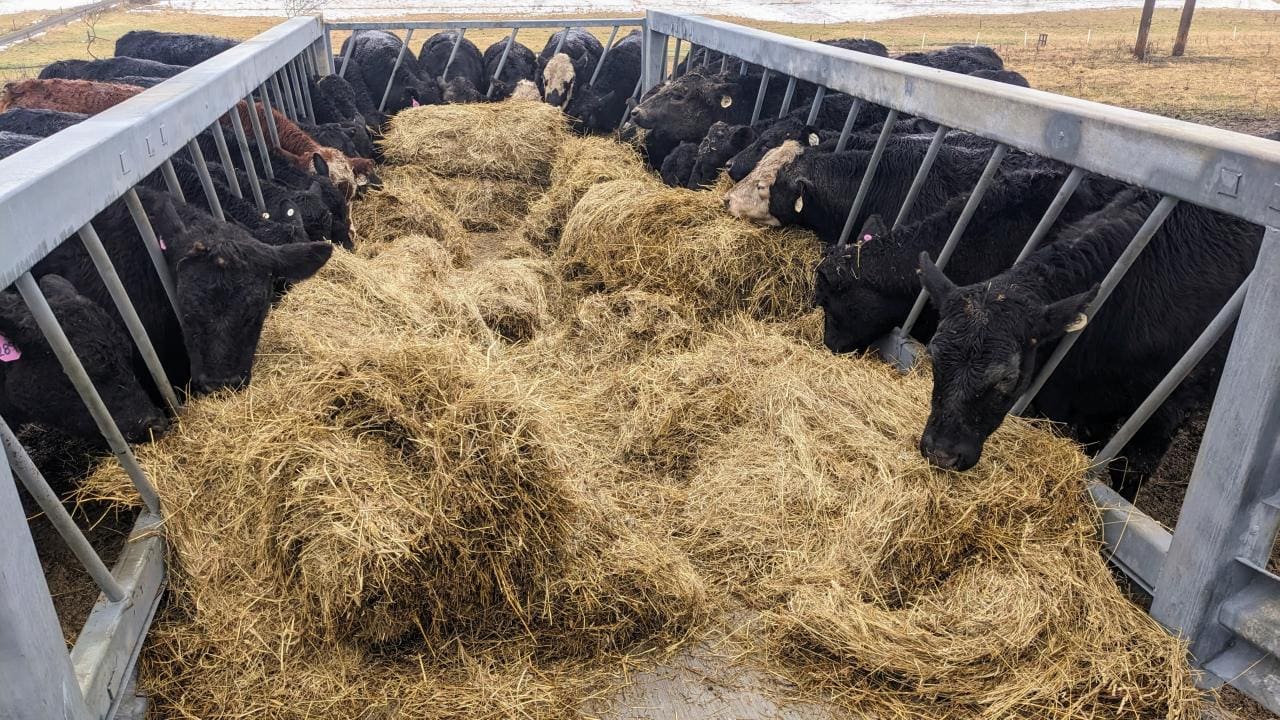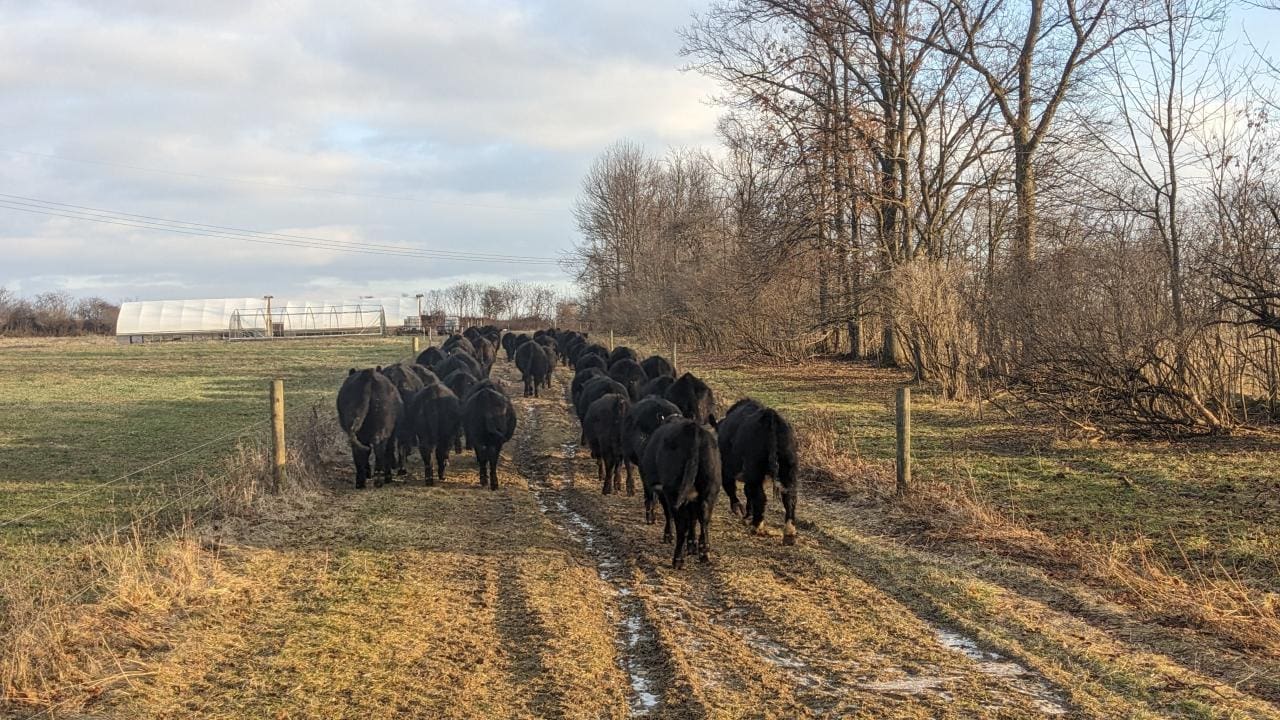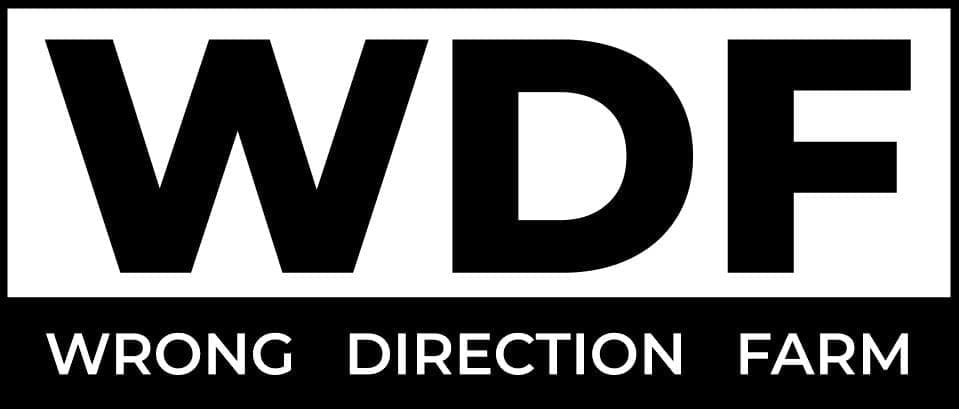This fall we constructed a mud-season feeding area for the cattle, in the hope that we would be able to prevent our herd from degrading the land during the spring mud season when the fields always turn to goo. Two weeks ago we experienced a thaw with several days in the 40 degree range, resulting in the quick melting of a substantial snow pack. So for New Year’s Day, Rachel and I walked the herd from their winter pasture up to the new feeding area to give it an earlier-than-anticipated test.
The feeding area is located on the best-drained spot of the farm, conveniently close to the road so I can bring hay in to the cattle from a paved surface without fear of sinking the tractor. The area around the feeding pad is armored with a thick layer of crushed stone. Even while the rest of the soil is liquifying, the herd can stand on dry, firm ground.
We were thoroughly pleased with just how well the feeding system worked. When I welded up the rails around the hay feeding area, I was hoping that all my dimensions were appropriate. Once a project is set in concrete and steel, it is no fun to make changes. The feeding rails do seem to have just about the right spacing to encourage the cattle to eat inside the feeder without pulling much of the grass out and spilling it on the ground. And I appreciate the way the raised concrete pad keeps the grass dry and clean, so they can get the most out of each bale.

I did have one small calf sneak into the feeder. When I climbed in to lead him out, he squeezed out on his own, just barely fitting his hips between the slats. I expect that by the time the real mud season rolls around in March or April he’ll have grown himself out of the problem.
Earlier this week the soil surface refroze. With firm ground underfoot, we sent the cattle back to work on their bale grazing project way out at the south end of the farm. (If you missed it, see this post about our strategy for adding fertility with our winter grazing.)
Ideally, we’ll use this feeding pad as little as possible each year. The downside to feeding on a pad is that we end up with manure piling up in a limited area, so this requires scraping and spreading by tractor. Whenever possible, I prefer to allow the cattle to spread their own manure instead of burning diesel and time to do a messy job they’d just as soon perform for free.
We’ve perennially been limited by muddy weather, so we welcome the flexibility that this piece of infrastructure brings to the farm. It should continue to pay dividends for soil health, livestock wellbeing, and — dare I say it — our sanity. There are times when I have felt terrible, knowing that I work hard all year to build and improve my soils, only to have them compacted and rutted during a few weeks of mud season. Mud will continue to be a challenge, but now we have another option to get around the worst of it.


4 thoughts on “Building Some Flex into the Farm”
Your essays and accompanying photos are very enlightening. The complexities and challenges of farming, and non-industrial organic/wholistic farming in particular, your creative and conscientious approach to problem solving, and your clear articulations, draw me in every week.
I had never considered the liquification of soil, i.e. mud formation, as a solvable problem for livestock farming. Whenever I have driven past the farms of upstate and central New York during my 72 years during mud season, I assumed that the mess was just a part of the cow’s and farmer’s life to be endured.
Thanks Jud.
We’ll always be challenged by mud, especially since we’re on heavy clay soils, but I’m happy to know that we have some options for mitigating the worst of it. -Dave
Very interesting, Dave. I assume the concrete or gravel pad helps keep their hooves healthy.
I built up a six inch layer of larger crushed stone to provide the stability, and then added a two inch surface layer of stone dust. Stone dust is made up of all the small screenings that are left over after a stone crusher sorts out all the different sizes of graded rock material, so it has the texture of coarse sand.
We used the stone dust because it is easy on their hooves. It has some give to it so it is comfortable, more like standing on a horse riding arena than standing on a gravel driveway.
The only place we have concrete is directly under the hay bales to keep them dry. Concrete would have been the easiest maintenance surface for the whole area, but it was too costly for this application. I think there are some long-term issues with cattle standing on concrete, but I doubt it would have been a problem had we built it entirely with concrete, just given that we only intend to use this structure for a few weeks each year.